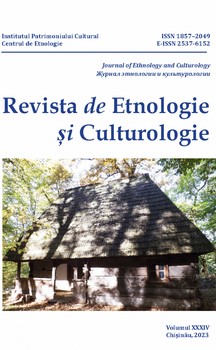Locuința în mediul urban din RSS Moldovenească în anii 1944–1961
Dwellings in the urban environment of the Moldovan SSR in the period 1944–1961
Author(s): Adrian DolghiSubject(s): Rural and urban sociology, WW II and following years (1940 - 1949), Post-War period (1950 - 1989), History of Communism
Published by: Institutul Patrimoniului Cultural al Academiei de Științe a Moldovei
Keywords: Dwelling; cities; Moldovan SSR; “Stalinka”; “Khrushchevka”;
Summary/Abstract: In the period after the Second World War, the population in the cities of the Moldovan SSR faced a major problem – lack of housing space. The Soviet authorities made efforts to rebuild the destroyed cities and provide the population with dwellings. In 1946, an ambitious housing construction program was launched within the Soviet Union, which also included the Moldovan SSR. The Stalinist housing policy focused on the construction of multi-storey apartment blocks and the creation of collective housing such as communal apartments and dormitories, where several families lived together in one large space. The rapid construction of dwellings has led to a standardization of construction and the use of less durable materials. During the ᾽50s and ᾽60s, apartment blocks were named according to the period in which they were built, such as “Stalinka” and “Khrushchevka”. In general, during the period 1944–1961, the urban environment of the Moldovan SSR had significant improvements in terms of dwellings, but problems related to living conditions persisted. The distribution of housing was extremely uneven, priority being given to the nomenclature, specialists brought from other republics. In the ᾽50s and ᾽60s, larger and more comfortable housing blocks were built along with additional infrastructure.
Journal: Revista de Etnologie şi Culturologie
- Issue Year: XXXIV/2023
- Issue No: 2
- Page Range: 20-27
- Page Count: 8
- Language: Romanian

